Abstract
The deceleration phase of the pitching mechanism requires forceful eccentric contraction of the posterior rotator cuff. Because traditional isotonic strengthening may not be specific to this eccentric pattern, a more effective and functional means of strengthening the posterior rotator cuff is needed. Twelve collegiate baseball pitchers performed a moderate intensity isotonic dumbbell strengthening routine for 6 weeks. Six of the 12 subjects were randomly assigned to an experimental group and placed on a Theraband® Elastic Band strengthening routine in a functional-diagonal pattern to emphasize the eccentric contraction of the posterior rotator cuff, in addition to the isotonic routine. The control group (n = 6) performed only the isotonic exercises. Both groups were evaluated on a KIN-COM® isokinetic dynamometer in a functional diagonal pattern. Pretest and posttest average eccentric force production of the posterior rotator cuff was compared at two speeds, 60 and 180°/s. Data were analyzed with an analysis of covariance at the .05 level with significance at 60°/s. Values at 180°/s, however, were not significant. Eccentric force production at 60°/s increased more during training in the experimental group (+19.8%) than in the control group (-1.6%). There was no difference in the two groups at 180°/s; both decreased (8 to 15%). Theraband was effective at 60°/s in functional eccentric strengthening of the posterior rotator cuff in the pitching shoulder.
Full text
PDF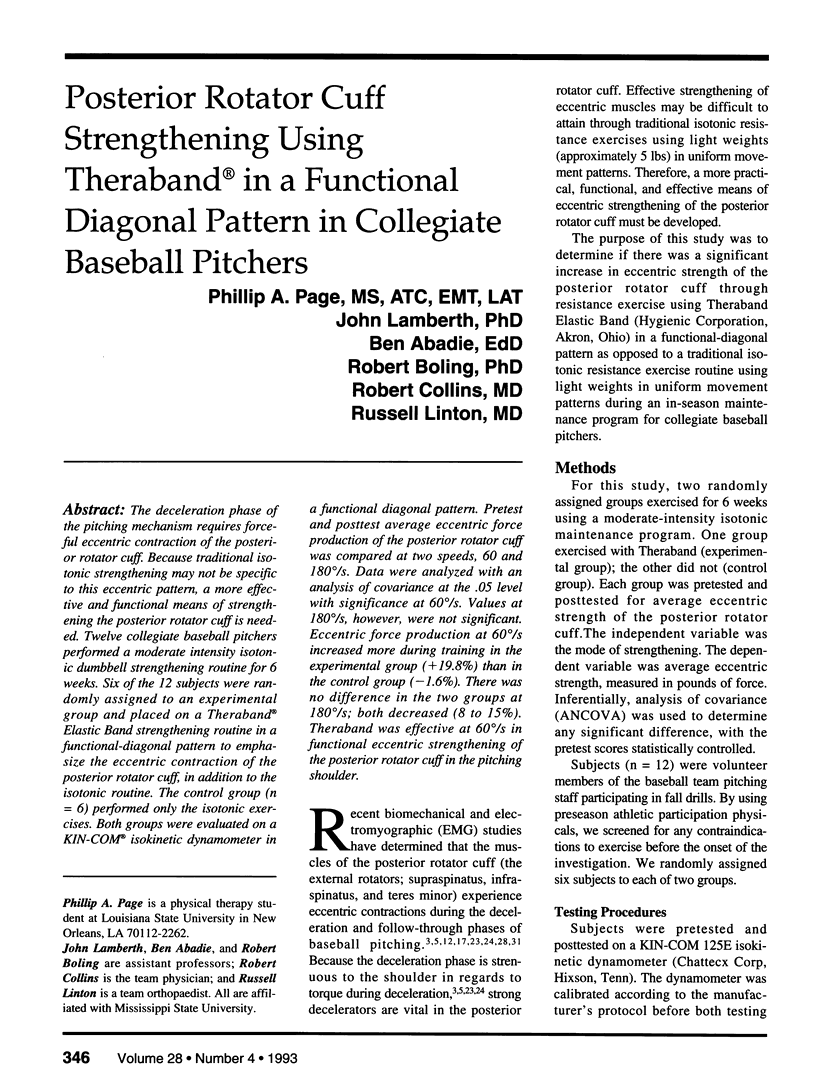
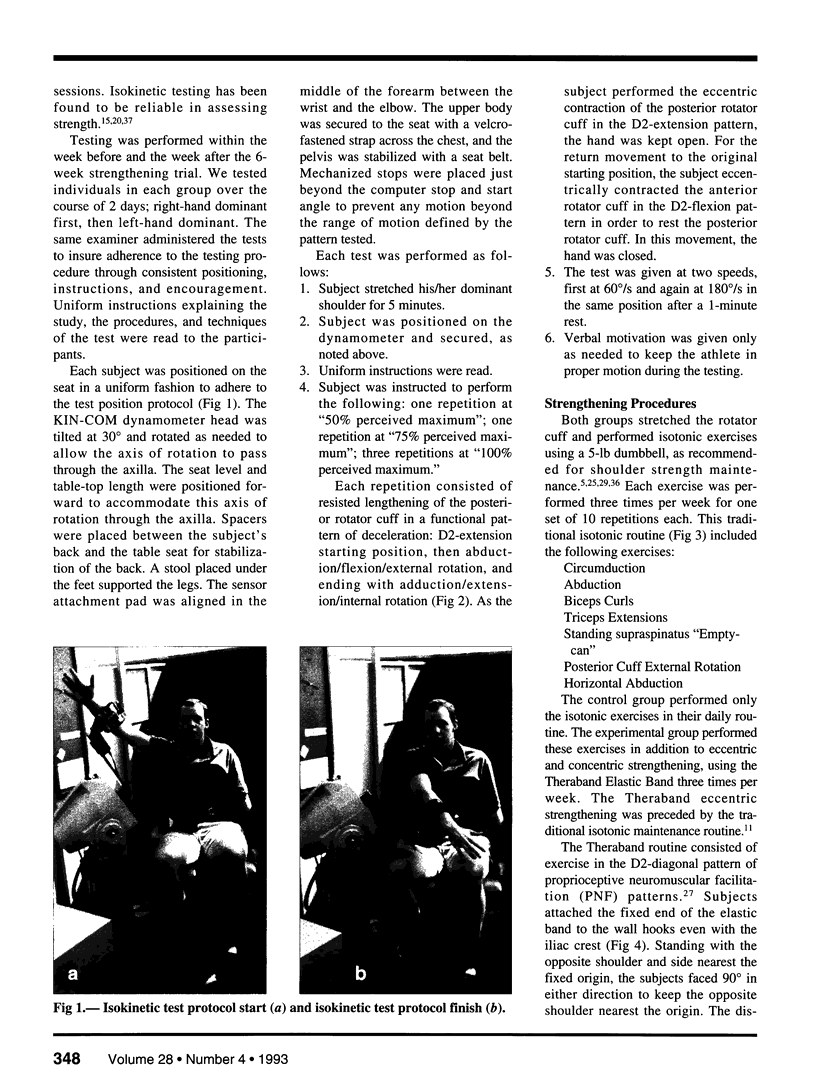
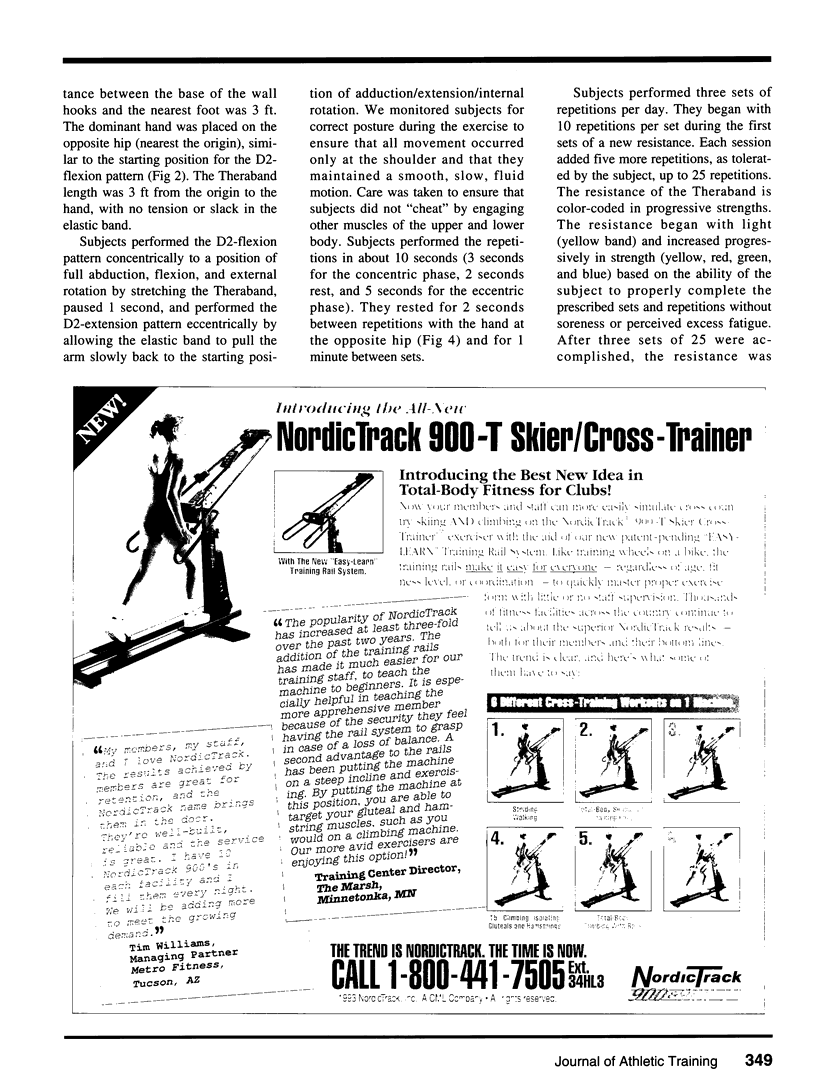
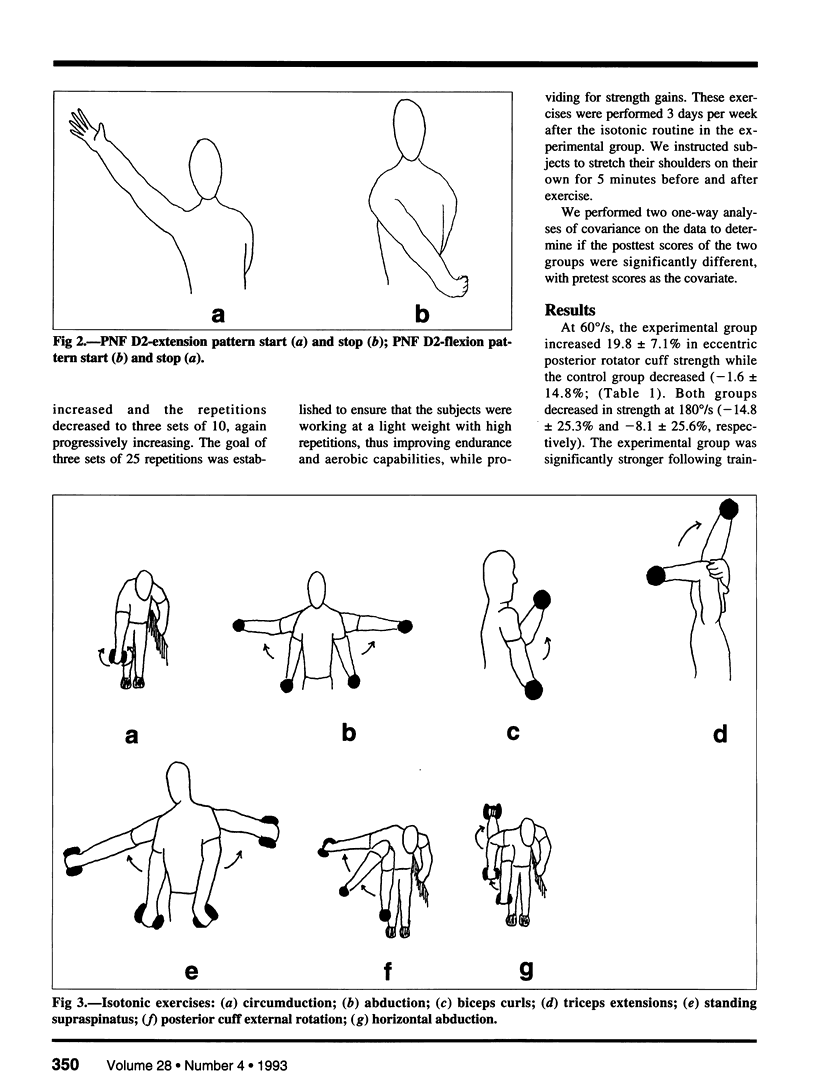
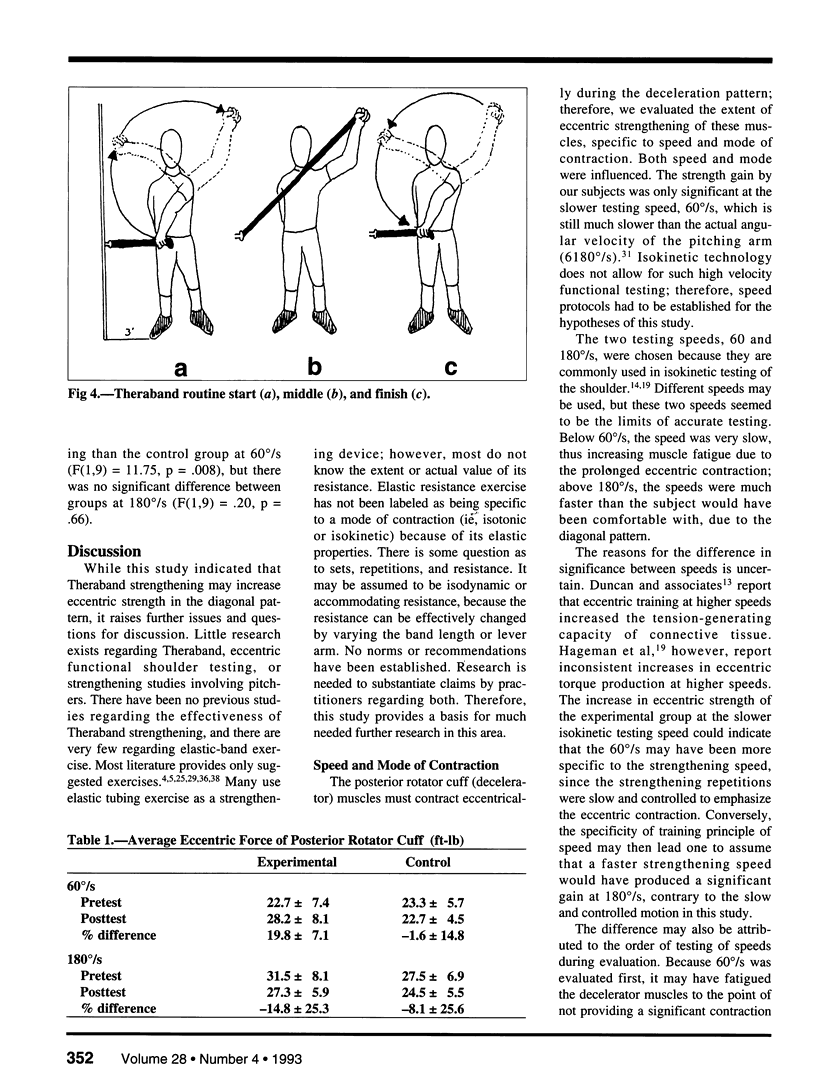
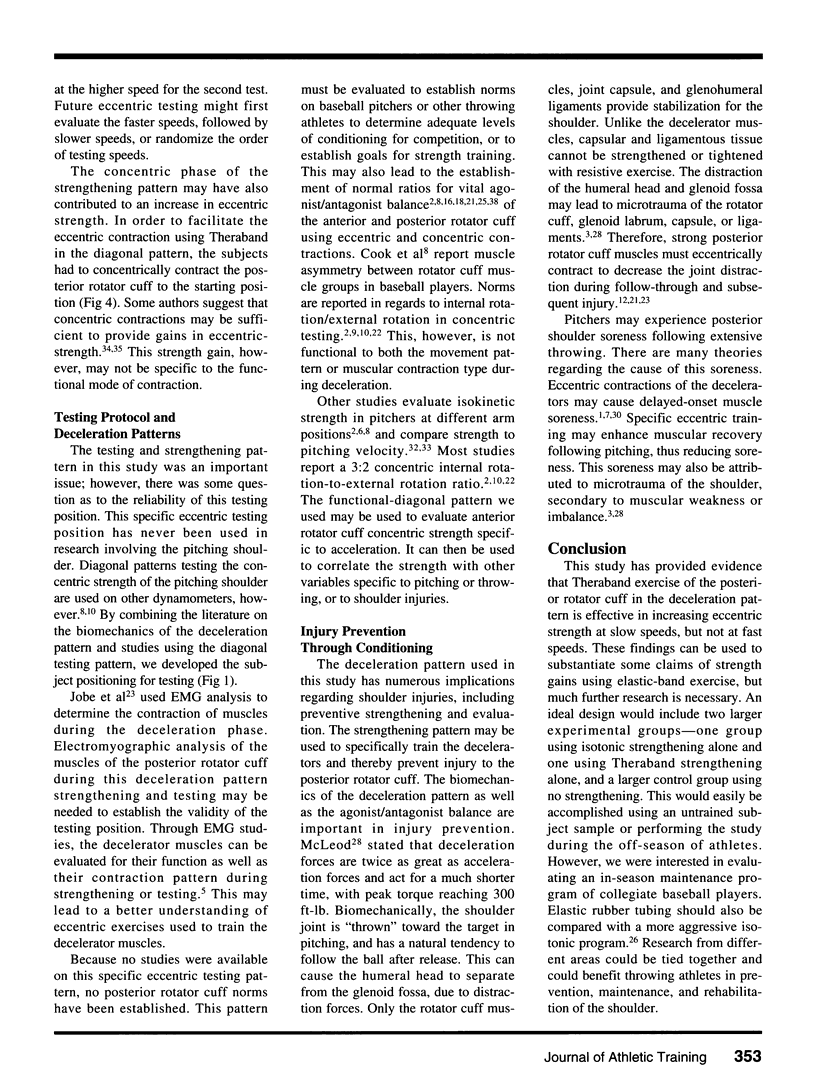
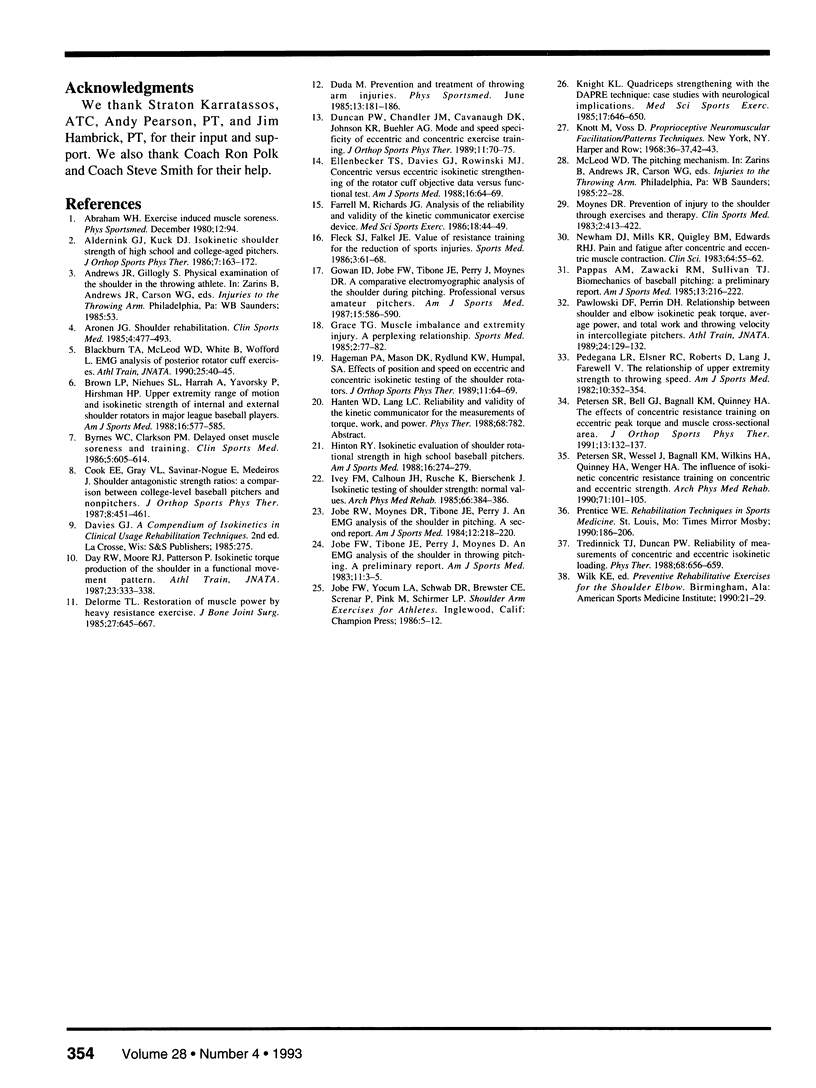
Images in this article
Selected References
These references are in PubMed. This may not be the complete list of references from this article.
- Aronen J. G. Shoulder rehabilitation. Clin Sports Med. 1985 Jul;4(3):477–493. [PubMed] [Google Scholar]
- Brown L. P., Niehues S. L., Harrah A., Yavorsky P., Hirshman H. P. Upper extremity range of motion and isokinetic strength of the internal and external shoulder rotators in major league baseball players. Am J Sports Med. 1988 Nov-Dec;16(6):577–585. doi: 10.1177/036354658801600604. [DOI] [PubMed] [Google Scholar]
- Byrnes W. C., Clarkson P. M. Delayed onset muscle soreness and training. Clin Sports Med. 1986 Jul;5(3):605–614. [PubMed] [Google Scholar]
- Ellenbecker T. S., Davies G. J., Rowinski M. J. Concentric versus eccentric isokinetic strengthening of the rotator cuff. Objective data versus functional test. Am J Sports Med. 1988 Jan-Feb;16(1):64–69. doi: 10.1177/036354658801600112. [DOI] [PubMed] [Google Scholar]
- Farrell M., Richards J. G. Analysis of the reliability and validity of the kinetic communicator exercise device. Med Sci Sports Exerc. 1986 Feb;18(1):44–49. [PubMed] [Google Scholar]
- Fleck S. J., Falkel J. E. Value of resistance training for the reduction of sports injuries. Sports Med. 1986 Jan-Feb;3(1):61–68. doi: 10.2165/00007256-198603010-00006. [DOI] [PubMed] [Google Scholar]
- Gowan I. D., Jobe F. W., Tibone J. E., Perry J., Moynes D. R. A comparative electromyographic analysis of the shoulder during pitching. Professional versus amateur pitchers. Am J Sports Med. 1987 Nov-Dec;15(6):586–590. doi: 10.1177/036354658701500611. [DOI] [PubMed] [Google Scholar]
- Grace T. G. Muscle imbalance and extremity injury. A perplexing relationship. Sports Med. 1985 Mar-Apr;2(2):77–82. doi: 10.2165/00007256-198502020-00001. [DOI] [PubMed] [Google Scholar]
- Hinton R. Y. Isokinetic evaluation of shoulder rotational strength in high school baseball pitchers. Am J Sports Med. 1988 May-Jun;16(3):274–279. doi: 10.1177/036354658801600314. [DOI] [PubMed] [Google Scholar]
- Ivey F. M., Jr, Calhoun J. H., Rusche K., Bierschenk J. Isokinetic testing of shoulder strength: normal values. Arch Phys Med Rehabil. 1985 Jun;66(6):384–386. [PubMed] [Google Scholar]
- Jobe F. W., Moynes D. R., Tibone J. E., Perry J. An EMG analysis of the shoulder in pitching. A second report. Am J Sports Med. 1984 May-Jun;12(3):218–220. doi: 10.1177/036354658401200310. [DOI] [PubMed] [Google Scholar]
- Jobe F. W., Tibone J. E., Perry J., Moynes D. An EMG analysis of the shoulder in throwing and pitching. A preliminary report. Am J Sports Med. 1983 Jan-Feb;11(1):3–5. doi: 10.1177/036354658301100102. [DOI] [PubMed] [Google Scholar]
- Knight K. L. Quadriceps strengthening with the DAPRE technique: case studies with neurological implications. Med Sci Sports Exerc. 1985 Dec;17(6):646–650. doi: 10.1249/00005768-198512000-00004. [DOI] [PubMed] [Google Scholar]
- Pappas A. M., Zawacki R. M., Sullivan T. J. Biomechanics of baseball pitching. A preliminary report. Am J Sports Med. 1985 Jul-Aug;13(4):216–222. doi: 10.1177/036354658501300402. [DOI] [PubMed] [Google Scholar]
- Pedegana L. R., Elsner R. C., Roberts D., Lang J., Farewell V. The relationship of upper extremity strength to throwing speed. Am J Sports Med. 1982 Nov-Dec;10(6):352–354. doi: 10.1177/036354658201000606. [DOI] [PubMed] [Google Scholar]
- Petersen S., Wessel J., Bagnall K., Wilkins H., Quinney A., Wenger H. Influence of concentric resistance training on concentric and eccentric strength. Arch Phys Med Rehabil. 1990 Feb;71(2):101–105. [PubMed] [Google Scholar]
- Tredinnick T. J., Duncan P. W. Reliability of measurements of concentric and eccentric isokinetic loading. Phys Ther. 1988 May;68(5):656–659. doi: 10.1093/ptj/68.5.656. [DOI] [PubMed] [Google Scholar]



